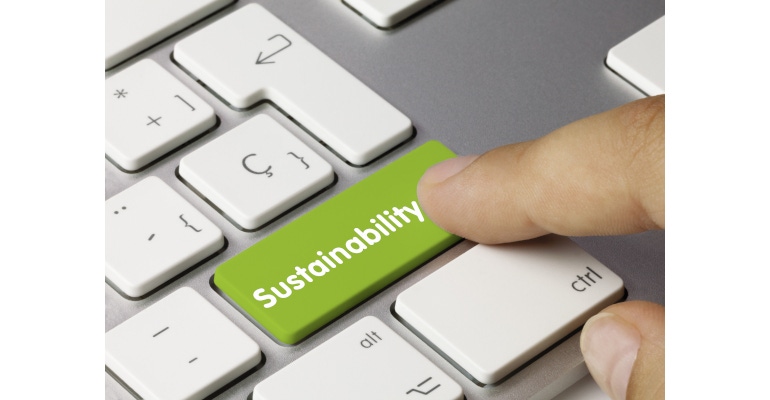Manufacturers of medical devices and drug-delivery devices should build sustainability into their designs, processes, supply chains, and more.

Medical waste is a subset of waste that can be contaminated by potentially infectious blood or other bodily fluids, typically generated at healthcare facilities. This is what makes reducing plastic waste and minimizing the carbon footprint of the healthcare sector more difficult than for other industries. Improper disposal of discarded needles, for example, poses a health risk to the public and may expose waste workers to transmissible diseases and needlestick injuries. Likewise, healthcare waste can pose serious hazards of secondary disease transmission. Proper waste management is therefore essential to infection control, particularly in the context of global efforts to contain the spread of COVID-19.
The waste-related challenge of the pandemic has been managing the environmental impact of a rise in demand for single-use devices, such as personal protective equipment (PPE). As early as March 2020, the World Health Organization (WHO) estimated that 89 million facemasks, 76 million pairs of examination gloves, and 1.6 million pairs of eye protection would be needed every month to safely protect the global healthcare force during the pandemic.1 Today, the vaccine rollout further adds to the growing amount of clinical waste, through its generation of vaccination material such as glass vials and syringes. With that said, waste generation did also see a small dip within small-scale private clinics when shelter-in-place orders called for a switch to telemedicine,2 thereby underlining one of the many benefits of remote patient monitoring. Moreover, the pandemic has shone a new light on the waste generation and management landscape and has highlighted a need for reform.
In parallel, growing awareness and preoccupation for environmental issues is further calling for more sustainable waste management solutions throughout the supply chain. At the end of a product’s life, incineration and sterilization both have their own environmental drawbacks. Product reuse for medical disposables may be commercially impractical since a repurposed device must meet the same regulatory requirements as a new product, meaning businesses must invest additional resources to ensure safety and compliance to the required standards and regulations.
Recycling
However, there is scope to recycle the materials used in medical device products. In fact, U.S. healthcare facilities generate 1 million tons of non-infectious plastic waste every year.3 PVC, for instance, is a material that can be recycled several times without losing its properties. This is best done though closed-loop recycling schemes. Outside of healthcare facilities, it can be a challenge retrieving medical products as some patients may not know how to return them or where these can be collected. Manufacturers can therefore work alongside pharmacies and healthcare providers to create an effective recycling scheme in which patients are encouraged to return their used products for recycling. This can be an effective system for some products such as inhalers, but invasive medical devices, including those used for injection, pose more of a challenge.
Manufacturing Efficiency
The manufacturing process can also be made more sustainable to reduce the carbon footprint of the product. For manufacturers, focusing efforts on maximizing the energy efficiency of their processes makes commercial sense given the cost-saving benefits from this change. Owen Mumford has already made some steps in the right direction, for instance, by ensuring that all energy is derived from clean, renewable sources. The company has also selected materials that reduce the amount of energy required to produce some of their products, such as bio-based monomers made from natural sources including wood pulp and sugar cane that offset carbon emissions in real-time.
More generally, optimizing manufacturing efficiency and productivity is an attractive way to lower energy consumption while reducing costs. LEAN manufacturing methodologies stand out as a strategy to avoid overproduction and improve inventory management, and ultimately reduce waste and save energy. Transport and logistics are other areas that can make a huge impact, particularly within the cold chain.
Designing in Sustainability
However, sustainability should be considered even before any of these processes begin. Right from the design concept phase, manufacturers must consider simplifying device design and, where possible, reducing the number of components within a medical device to simplify product assembly as well as potentially facilitate disassembly at the end of the product’s life cycle. When choosing materials, more eco-friendly options should be selected where possible to minimize the environmental impact during incineration or after disposal. One company is now making pregnancy tests with plant fibers, which means they can be flushed and then biodegrade within ten weeks. With 20 million pregnancy tests sold in the United States alone, such initiatives can have a significant impact.4
Product designers are increasingly looking at hybrid device options that contain both a disposable and reusable component. At present, it’s unlikely that parenteral or invasive devices can be rid of any disposable element, but hybrid devices offer a viable, positive leap forward. This is especially valuable at a time where the market for digitally connected drug-delivery devices, which contain an electronic component, is expected to continue its upwards trajectory. The financial and environmental impact of throwing away a connected unit containing embedded electronics would be too substantial not to consider making it reusable.
Commercial Incentives
In an increasingly environmentally conscious world, manufacturers must all play their part in reducing the carbon footprint of the healthcare industry – which can be done by taking into consideration the sustainability of device designs, manufacturing processes, and recycling options when bringing a product to market. Doing so can also act as a competitive differentiator and help potentially reduce manufacturing costs, offering manufacturers multiple commercial incentives to place sustainability at the top of their agenda.
References
World Health Organization, "Shortage of personal protective equipment endangering health workers worldwide," 03 March 2020, https://www.who.int/news/item/03-03-2020-shortage-of-personal-protective-equipment-endangering-health-workers-worldwide.
New Security Beat, "Mountains and Molehills: Medical Waste in China and the U.S.," November 2020: https://www.newsecuritybeat.org/2020/11/mountains-molehills-medical-waste-china-u-s/.
Healthcare Plastics Recycling Council, "Why recyclers should consider healthcare plastics as an important feedstock," 23 Jan 2019, https://www.hprc.org/single-post/2019/01/22/recyclers-advantage-healthcare-plastics.
Fem Tech Insider, "Lia Launches the World’s First Flushable and Biodegradable Pregnancy Test," March 2021: https://femtechinsider.com/lia-launch-pregnancy-test/.
Find Owen Mumford Pharmaceutical Services’ report on this topic – ‘Sustaining the Pace: Three perspectives on how sustainability is being achieved in the medical device market’ – here: https://www.ompharmaservices.com/news-and-resources/sustaining-the-pace
About the Author(s)
You May Also Like




